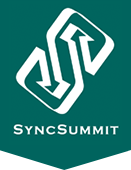By Mark Frieser
Diminishing revenues from recorded music have led labels, radio and many promoters to act increasingly risk-adverse in terms of marketing spend. So where can an artist (and their management, and let’s be honest, in many cases, their labels) find the financial/logistical heft to market and promote product to the widest possible audience?
Brands.
At our Hollywood Sync Summit this past December, one of the most significant and recurring themes was the promotional and marketing potential of brand+music deals.
Speakers like Music Dealer’s Eric Sheinkop (Co-Author of Hit Brands, for sale now with our Music In Media Survey), Coca-Cola’s Emmanuel Seuge, Destiny’s Child Manager Mathew Knowles and Nettwerk’s CEO (and fun’s manager) Terry McBride all spoke to the value of brand partnerships and syncs to grow an artist’s audience as well as generate significant revenue.
Why? Because that’s where the money is.
Think about this. At the very top level, label marketing budgets max out at ~$25MM (and more often are far less than the $750K-$1.4MM stated by the IFPI as the amount necessary to break an artist in the US market).
Certainly this label investment (if it’s given) get’s artists exposure (and a LOT of artists would be happy to get it), but it’s nothing in comparison to the tens of millions spent annually by a luxury brand like Louis Vuitton ($30MM+), the $100MM+ spent to launch a major video game or the billions of marketing dollars spent by major consumer brands like Coca-Cola ($11BL), Samsung ($4BL), Apple ($1BL) or Target ($1.5BL).
That’s real marketing power. Tying an artist to a brand’s star doesn’t just mean more money. It also means (hopefully) positive brand affiliation, support from the brand’s social, online and offline presence and in many cases, direct distribution through the brand’s points of sale. And it’s not only top-tier artists that are working with brands as evidenced by Coca-Cola choosing X-Factor winner David Correy’s “The World Is Ours” as their official 2014 World Cup song.
And what does the brand get? When a brand affiliates with the right artist, it promotes an inherent lifestyle choice, lifts the value of the brand in the opinions of fans, they get direct artist support for their marketing campaigns and tangible results in terms of loyalty and revenue.
In my opinion, 2013 was a watershed year for these types of deals. The deals have been larger, more wide ranging and more significant, leading to more downloads, more sales and more exposure for artists and their music. Following are what I think were some of the more interesting deals on the high level in 2013 that serve bellwethers for the future of music marketing.


